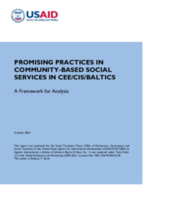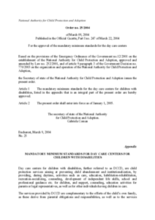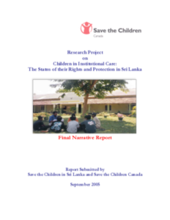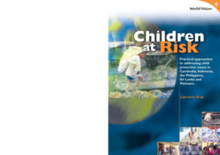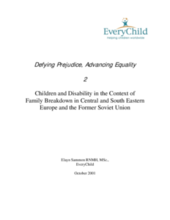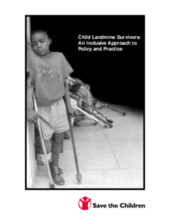Displaying 451 - 460 of 464
Provides a framework for analysis of community-based social welfare services and linkages with government structures. Includes analysis of alternative care provision, de-institutionalization, programming for children with disabilities, standards of care, and overall social welfare sector reform.
Outlines minimum standards for the operation of a day care center for children with disabilities in Romania.
A situation analysis of children in institutional care that includes policy implications and key recommendations.
Country report of Russia on the situation of children in residential care in anticipation of the Second International Conference on Children and Residential Care: New Strategies for a New Millennium, to be held in Stockholm 12 – 15 May 2003.
This paper outlines the International Save the Children Alliance’s position on residential care. It addresses the proliferation of residential care, its negative impact on children and the need for international attention. The paper presents the work of Save the Children and other agencies in order to highlight relevent issues and to provide a guide for those working with separated children.
Discusses approaches to protecting at-risk children in five Asian countries. Identifies programming and policy measures that effectively address child abuse. Emphasis on committing all levels of society to coordinated practical response.
A research study which explores the overt and covert abuse and neglect experienced by children, especially by those who work and/or live on the streets, in three Nigerian towns. Includes a brief discussion of the African Network on Prevention and Protection against Child Abuse and Neglect (ANPPCAN) in Nigeria.
An account of the massive child welfare crisis in Romania which erupted from a movement in Romania during its communist regime to institutionalize thousands of children. This paper also reports the efforts of NGO’s, PVO’s and the international communities to reverse the damage after the fall of communism and also where the efforts need to be directed.
A study on children with disabilities in the context of family breakdown. Includes overviews and statistics from 10 countries, a call for strengthened family support services, and draft guidelines on how child agencies can better mainstream these issues into their work.
Guidance on principles and recommendations for work with children and adolescents who survive landmine injuries. Appendices include detailed lists of relevant resources.

